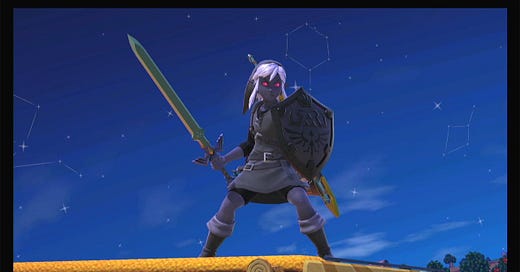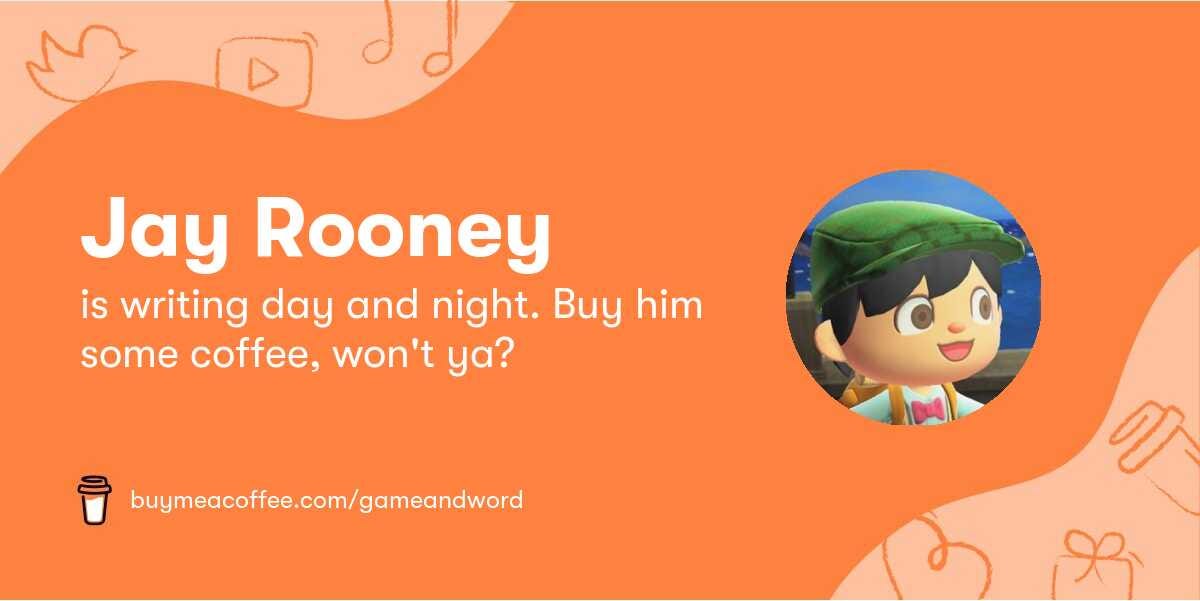Issue 3.4: The Shadows We Cast
A Psychological and Narrative Survey of the Shadow Archetype in Video Games
Hello! If you enjoy Game & Word, please hit the “heart” button at the very top or very bottom of this post, or on the bottom-left corner of the Substack app. It helps more people find Game & Word, which helps us survive and grow!
NOTE: Gmail users, you might see a truncated version of this message. If this happens to you, just click the “View entire message” link next to where it says “[Message clipped]” to read the rest.
Game & Word Volume 3, Issue 4: Sunday, May 22, 2022

Publisher: Jay Rooney
Author, Graphics, Research: Jay Rooney
Logo: Jarnest Media
Founding Members:
Le_Takas, from Luzern, Switzerland (Member since April 14, 2022)
Ela F., from San Diego, CA (Member since April 24, 2022)
Alexi F., from Chicago, IL (Member since May 13, 2022)
Elvira O., from Mexico City, Mexico (Member since May 18, 2022)
Special Thanks:
Chris Brandrick of Switch Weekly (yes, again!) for graciously hosting me on his YouTube channel.
YOU, for reading this issue.
Table of Contents
Summary & Housekeeping
Sponsored Message
Feature: “The Shadows We Cast” (~30 minute read)
Food for Talk: Discussion Prompts
Further Reading
Game & Word-of-Mouth
Footnotes
Summary:
Today, we’ll get acquainted with the Shadow archetype, its role in human psychology, and how the protagonist’s Shadow is depicted in video games—particularly zooming in on EarthBound, Celeste, and The Legend of Zelda.
Previous Issues:
Volume 1 (The Name of the Game): Issue 1 ● Issue 2 ● Issue 3 ● Issue 4
Volume 2 (Yo Ho Ho, It’s a Gamer’s Life for Me): Issue 1 ● Issue 2 ● Issue 3 ● Bonus 1 ● Issue 4 ● Issue 5 ● Issue 6 ● Issue 7 ● Bonus 2 ● Issue 8 ● Bonus 3
Volume 3 (Game Over Matter): Intro ● Issue 1 ● Issue 2 ● Issue 3 ● Podcast 1
Housekeeping
Book Giveaway Closes Tonight!
HEADS UP! The clock is ticking. It’s almost over. Our book giveaway is about to wrap up! The entry period closes tonight at 11:59 pm (PDT); so if you, or anyone you know, would enjoy these books, then hurry—today’s the last day to add yourself to the pool. We will announce the two lucky winners next Sunday, May 29, 2022. More details in the link below:
NOTE: If you’re already a Game & Word subscriber—free or paid—you’ll be automatically entered, and no further action is needed.
Game & Word and Switch Weekly Talk About EarthBound
I know it seems like I’m plugging Switch Weekly a lot recently (and I’m sure Switch Weekly’s readers feel the same about Chris plugging me and Game & Word), but I promise it’s not intentional or planned.
There’s just so much overlap in our newsletters’ audience, chosen topics, and commitment to quality that collaborative opportunities inevitably pop up. And Chris is just such an awesome guy to collaborate with!
In any case, Chris was kind enough to invite me as a guest on Switch Weekly’s YouTube channel to talk about why “You need to play EarthBound on Switch.” And if you know anything about me, you know I never pass up a chance to talk about EarthBound! The end result is the following video:
Between the video you just saw and the fact that EarthBound has featured so prominently in this volume, I hope I’ve convinced you to pick up your Nintendo Switch (or procure one if you don’t currently own it), purchase a Nintendo Switch Online (NSO) membership, and boot up EarthBound.
It is one of the most compelling, whimsical, funny, bizarre, terrifying, joyful, heartrending, beautiful, earnest, moving, and genuinely life-changing stories ever told (and not just in gaming, but in any medium). I truly believe I’m a better person for having played this game, and I can’t wait to hear the impression it leaves on you.
I sincerely believe that everyone should play this game at least once in their lifetime. And now that it’s on NSO, it’s within easy reach of millions of potential fans—including, most likely, you. Seriously, minimize this tab and go play this game ASAP.
Sorry, I get carried away sometimes. Anyway, do any of you love this game as much as I do? If so, please let me know (and why) in the comments:
[Sponsored]: From Playing Games to Making Games
From time to time, Game & Word will include sponsored content, such as (clearly labeled) sponsored messages, announcements, ads, referral/affiliate links, and other promotional vehicles.
Game & Word does not share your subscriber info with advertisers (or with anyone, period), and only accepts sponsorships from people and products we know and trust.
For more information on our guidelines for sponsored content, please read our Advertising Policy at the bottom of Game & Word’s “About” Page.
My wonderful friends at the Indie Game Academy (IGA) are getting ready to start teaching its Summer 2022 cohort. This particular course is an intensive, three-month video game development workshop. It’s well worth checking out if you’ve ever wanted to break into the game industry or start your own studio.
[DISCLOSURE: Game & Word’s publisher is currently enrolled in an IGA course.]
At IGA, you’ll work with your team to create, publish, and monetize your very first game. Along the way, you’ll meet and learn from industry veterans working for Mojang Studios (you know, of Minecraft fame), Wizards of the Coast, and other big names in gaming.
Oh, and you don’t need to be a programmer—each team will also need writers, designers, project managers, and several other roles.
The next cohort starts very soon, on Monday, June 6, 2022. That’s only two weeks away! You can learn more on their website, or jump-start your application by scheduling a call with the Headmaster:
OR…
Be sure to mention that I sent you, as it’ll help keep the lights on at Game & Word!
The above sponsored content contains an affiliate link. This means that if you schedule your introductory call using the second (bottom) button, IGA will give Game & Word a small commission for each course you enroll in.
Publishing Game & Word is a huge investment of time and money. Income from these partnerships and other revenue streams (such as paid subscriptions) helps keep the newsletter afloat, free, and accessible to all. We appreciate your understanding.
Or, if you’d rather do a “one-and-done” type of deal, you could instead help offset my caffeine costs by chipping in for a cup of joe:
Feature—The Shadows We Cast
🚨🚨🚨 SPOILER ALERT 🚨🚨🚨
This post contains visual and narrative spoilers for Celeste, EarthBound, and several games in The Legend of Zelda series. You've been warned!
💡💡💡 POINT OF CLARIFICATION 💡💡💡
For consistency’s sake, this article will refer to MOTHER 2 / EarthBound as simply EarthBound, as we’ll be examining the North American localization and not necessarily the original Japanese script (unless otherwise noted).
This also applies to any character/location names and dialogue that differ between the two releases (ie, “Pokey” instead of “Porky,” or “Evil Mani Mani” instead of “Mani Mani Devil.”)









